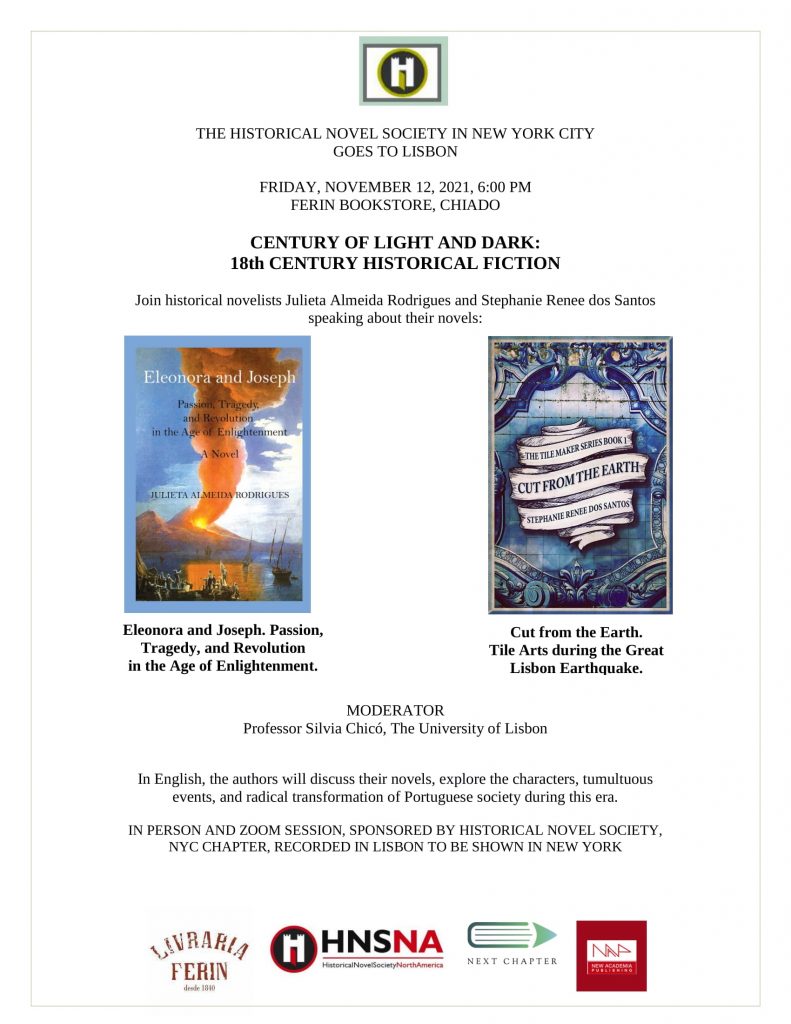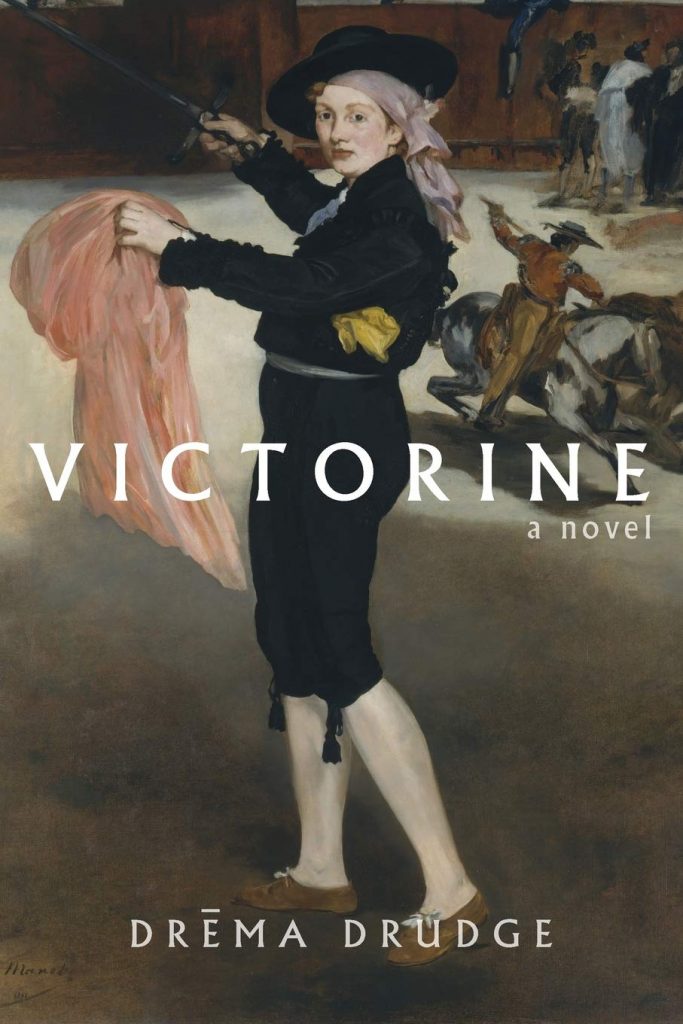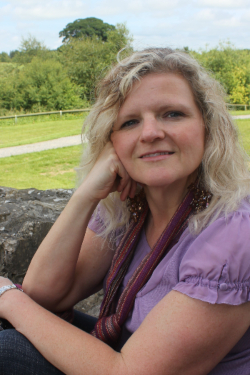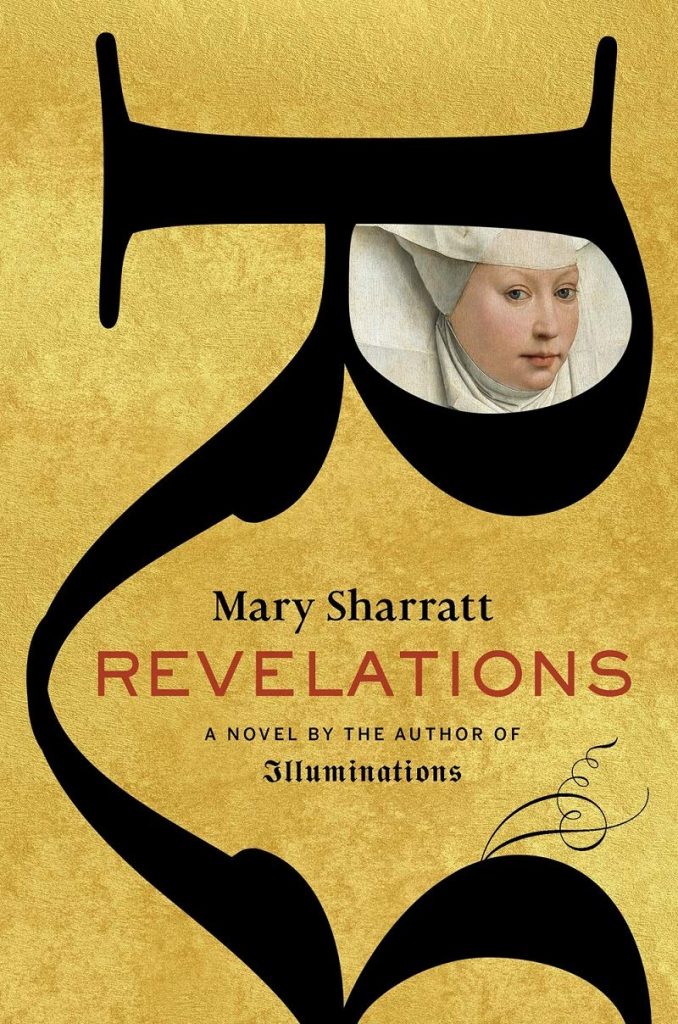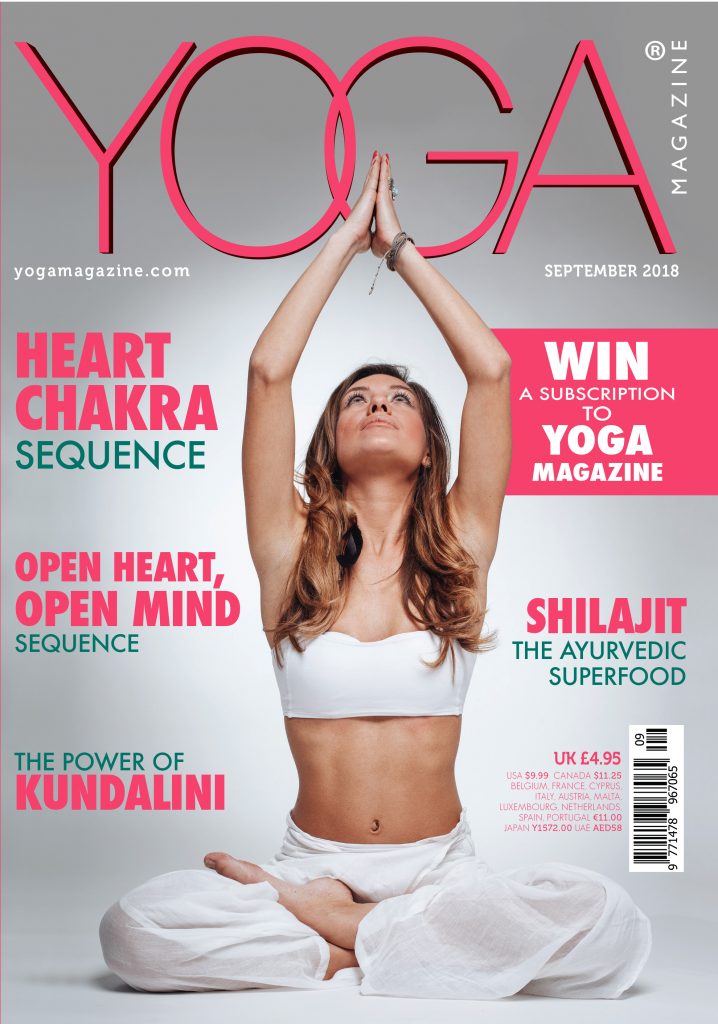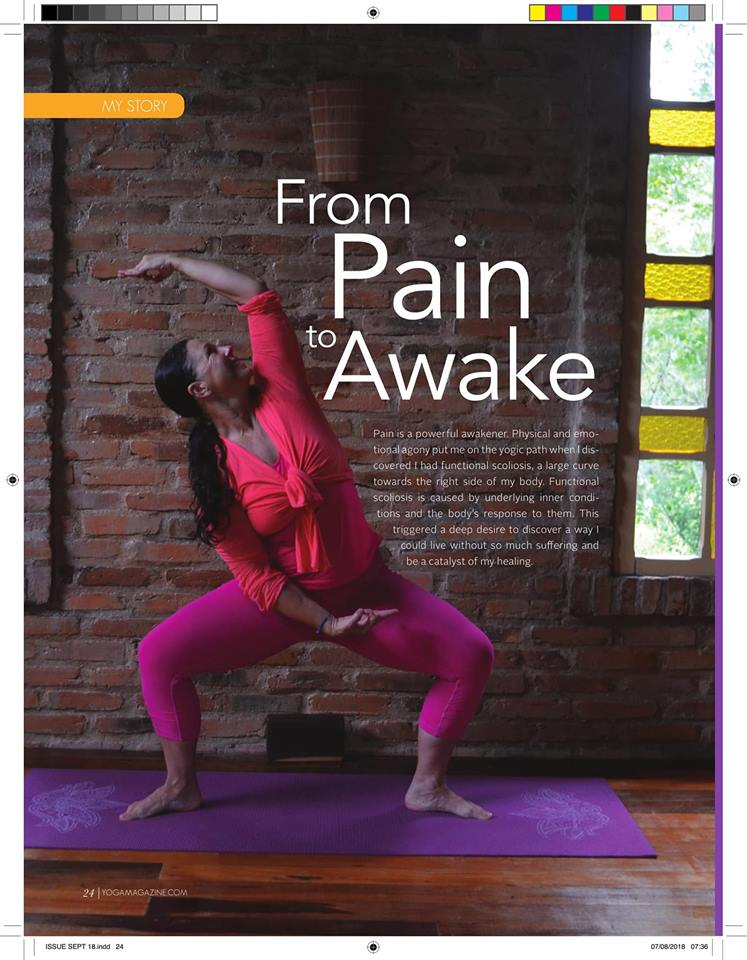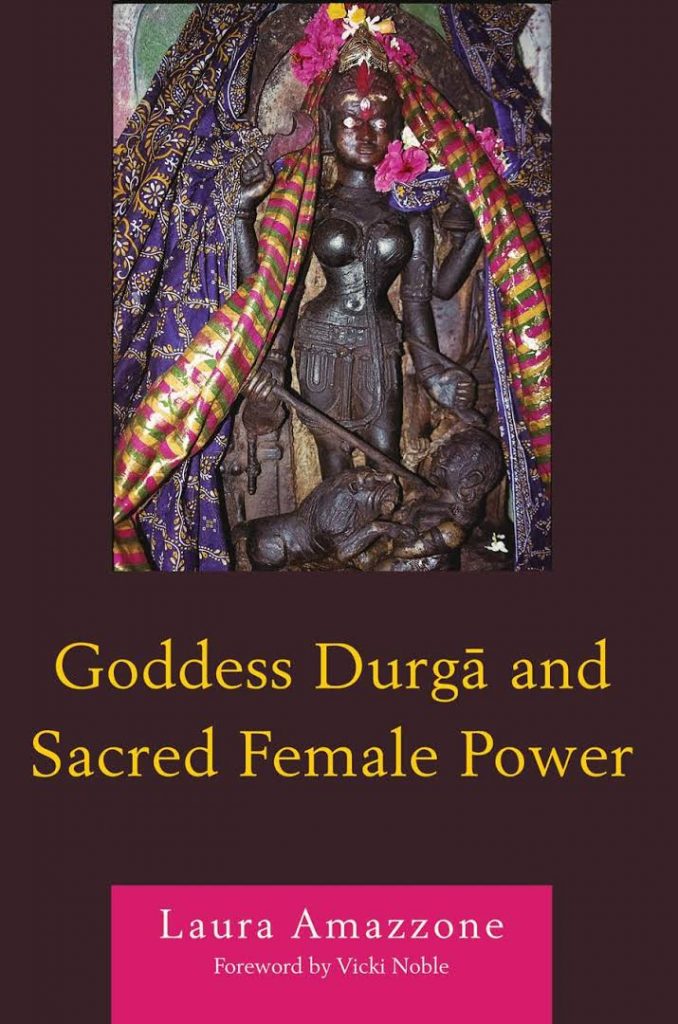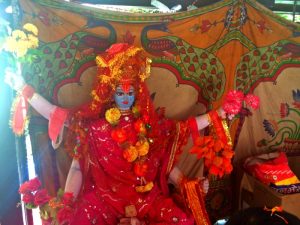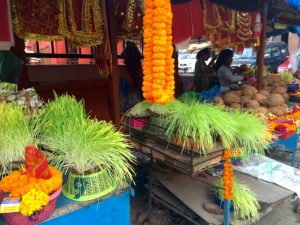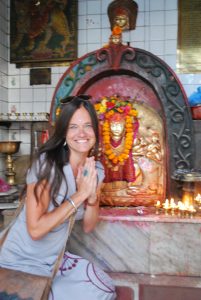
Shakit Rising: Embracing Shadow and Light on the Goddess Path to Wholeness by Kavitha M. Chinnaiyan, MD is a fascinating and instructive book that brings together the strengths of the Eastern traditions of Yoga, Tantra, Vedanta and The Direct Path. To assist people to discover the shadow and light parts of one’s being and to harmonize them, to potentially realize liberation from all types of suffering. The book offers easy to apply to daily life practical ways to begin working with these established systems through the Tantric Dasha Mahavidyas (Ten Wisdom Goddesses), creating a modern day pathway to ancient teachings.
After the two introductory chapters, which give background and explores the differences and strong points of theses traditions, the author explains what are “progressive paths” and “direct paths” to self-realization. In addition, she touches on the female roots of these traditions, bringing to light and crediting the ancient contributions of the feminine in developing the yogic systems of today. A refreshing and much needed reminder of the historical ancestry of these established lineages.
The book then is organized chapter by chapter focused on each of the ten wisdom goddesses. Whose traditional sadhana (practices) are mantra (repeated sound), yantra (geometric diagram aids for meditation), puja (act of worship) and meditation visualizations. But instead of working with these traditional practices to access the guiding wisdom of these goddesses, Chinnaiyan in Shakti Rising offers us a visionary new approach.
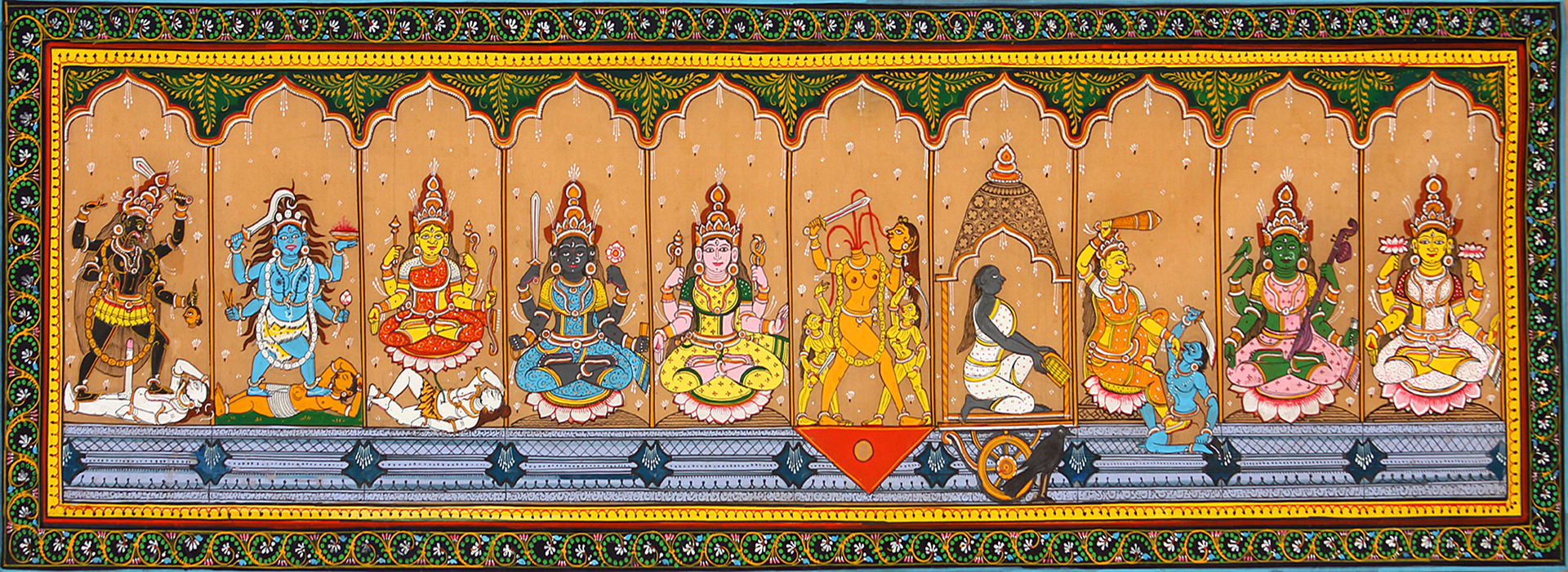
10 Mahavidayas (Ten Wisdom Goddesses) Kali, Tara, Shodasi, Bhuvaneshwari, Bhairavi, Chhinnamasta, Dhumavati, Bagalamukhi, Matangi, Kamala
The author presents and relates each goddess to the yamas (ethical values) and niyamas (virtues) of the Yoga Sutras of Patanjali. This is helpful for those new or already steeped in yoga for it gives one a way to relate the teachings of sage Patanjali (dualistic path) with those of Tantra (non-dualistic path).
Also, the identifying of specific yamas and niyamas to each goddess is beneficial because in the Yoga Sutras of Patanjali it is not outlined how to realize or apply these qualities to one’s life. That’s been left up to each practitioner to figure out. Chinnaiya book offers just that, a way, a path to honor and apply these Yoga Sutra guidelines to one’s life through the sacred feminine wisdom of the Mahavidyas.
From there, the author explains the symbolism, meaning and specific teachings of each of the Mahavidyas, allowing one to become familiar with each goddess before exploring the shadow and light aspects of what her teachings are trying to transmit and liberate us from. Chinnaiyan offers a clear explanation and way to approach each goddess and her light and dark attributes with the intent to discover one’s already inherent wholeness within, but that is often veiled by diverse and often hidden limiting beliefs.
With this understanding foundation established, Chinnaiyan then presents in each chapter two main practices: “…a progressive path exercise for transforming a shadow aspect into a yama or niyama, and a Direct Path practice of non-dual inquiry into the cosmic force of each Mahavidya.” These exercises help to start exploring one’s relationship with each goddess and her specific signature wisdom. As a way to begin self-inquiry and to discover where one might be limiting oneself and how to approach and shift these self-limiting attitudes.
The book bridges dual and non-dual concepts of these Eastern traditions and presents a holistic route to heal, overcome self-limitations, allowing one to open and embody one’s best-self.
This is a unique book in how it’s brought together these wisdom currents to uphold and support each other to access the sacred female wisdom of the Mahavidyas. And in such a way so that the knowledge of the teachings of the ten wisdom goddesses are applicable to one’s life and daily practice in today’s world. This book meets the modern day needs of people seeking liberation from suffering, to discover one’s inherent inner bliss while steeped in divine feminine wisdom and the supporting traditions.
Throughout the book the author shares wise insights, this being one of my favorite passages: “If we haven’t learned the skills of living in harmony with others, we can unintentionally and unnecessarily continue to cause harm through our words and actions. Our internal state of freedom can remain separate and dissonant from our external behavior.” Such a good reminder that liberation from suffering isn’t just about ourselves it’s about learning to be in the world in such a way that extends this internal freedom and love-light to all whom we come into contact with.
On this note, I am pleased that Kavitha M. Chinnaiyan, MD was open to interview to share a more about this important book and what it holds….
Stephanie Renee dos Santos: Will you share with us how “Shakti Rising” came into being?
Kavitha M. Chinnaiyan: It’s one of those stories that Shakti-lovers may be familiar with, you know, where you become Her instrument and are carried along by Her! After being initiated into Sri Vidya sadhana, my perspective began to change in sweet and wonderful ways, and I began to be drawn very deeply into the mysticism of the Dasha Mahavidyas. I’d spend weeks or months contemplating on a particular Mahavidya, and quite miraculously, the lessons I needed to learn from Her would manifest in daily life.
For instance, almost immediately after I began Kali sadhana, my life went through a great upheaval. Big changes occurred at work and a long-term project I was involved in (way past its time) ended abruptly. A coworker who had worked closely with me left and found employment elsewhere. Spiritual sanghas I was deeply involved in no longer felt like the right fit and I left them. Kali sadhana, as you know, is pretty much like this. She cuts through our illusions without any concern for our comfort!
Along with big transformations, there was this irresistible surge of creative energy—one to write. So, I started blogging about the Mahavidyas. What was really interesting at the time is that the writing couldn’t be forced. The urge to write about a Mahavidya would arise and I’d sit down to write, as if in a trance. Thereafter, no matter how hard I tried, I couldn’t write about the next Mahavidya until seemingly the main lessons of her sadhana had been learned. Spontaneously, the urge would arise again and the writing would flow.
When the series ended, some of my readers asked me to write a book, to expand upon each Mahavidya. By then, I was deeply engrossed in the Direct Path, which, for me, seemed beautifully complementary with the tantric path of Sri Vidya. The DP had (and continues to) clarified so much for me with respect to tantric practices, and specifically those related to the Mahavidyas. And so, Shakti Rising came about as an amalgamation of those insights and practices, with an effort to present a unique, accessible path of these great goddesses.
SDS: What do you see as the added strengths of this inter-disciplinary/multi-disciplinary approach to the wisdom and teachings of the Mahavidyas?
KC: As you know, the Mahavidyas have been deeply enshrouded in inaccessible esoteric philosophy. While that is certainly appealing to some, these deities have so much to teach us, no matter what spiritual path we are on.
For a staunch non-dualist on the path of jnana (wisdom or knowledge), they can be gateways to surrender and sweetness arising from devotion. For one caught up in devotion, they are beacons of non-dual wisdom. For one who is attracted to traditional tantric practices (such as the use of mantras and yantras), they enable deep inquiry that results in living realization of the relationship between the bindu (the central point of a yantra) and the dynamic geometry that dances around it.
For one who is a Shiva bhakta, Shakti as the Mahavidyas enables deeper realization of Shiva-ness. For one who is a Shakta, the Mahavidyas open new vistas of delight, not only in sadhana but also in ordinary life.
Mostly, a multii-disciplinary approach to the teachings of the Mahavidyas makes them relevant to each of us.
SDS: What do you hope readers and practitioners glean most from “Shakti Rising”?
KC: Mostly, I hope that this book opens the reader to Shakti’s all-pervasive, ever-present, absolute love and wisdom. Perhaps readers will find resonance with one or more of the Mahavidyas and be called to explore them further in their own practice and lives. The beauty of these goddesses is that they are living, shimmering presences in us and can be invoked quite easily through contemplation and practices.
SDS: How has writing this book expanded or deepened your understanding of this divine feminine path to wholeness and its place in the world today?
KC: It is a work in progress! Writing the book has been a great sadhana but even since then, I’ve had immense openings into the mystery of the divine feminine and how elusive it can be, particularly in the shifting landscape of our current collective social, political and cultural lives. It is as if Shakti is teaching us the hard way about what it means to align with Her divine power, not only individually or as women, but as humans.
In my own life, I feel the divine mother’s presence a more and more every day. If there is one thing that Shakti sadhana does, it is to teach us to surrender to divine will, to rest in Her flow and to trust in Her process. As I’m sure you can relate, it is quite a paradox—the more we rest in Her flow, the greater is our ability to act effectively, to bring about meaningful change in any way we can.
A miraculous thing that has happened with treading the path of the divine feminine is meeting so many others on the same path from whom I’m learning so much, including you! The path of Shakti is one of inclusion, collaboration and celebration—in joy, sweetness and gratitude. There are simply no words to describe the joy of celebration in very ordinary things, like driving to work, having a conversation, or sipping a cup of tea, or of coming together in creative ways.
SDS: Is there anything else you’d like to share with us?
KC: Yes, I’m in the process of creating a course on the multi-disciplinary teachings of the Mahavidyas, based on Shakti Rising but to include many practices that are not in the book. It is scheduled to be launched in early 2018, and will be announced in advance on my website.
Thank you so much for this discussion!
Likewise, Kavitha! Deep bow, Devi! For being a conduit to helping others to potentially realize their wholeness and a life free from unneeded suffering, for creating a modern day path to this vital ancient wisdom.
 Kavitha Chinnaiyan, MD, is an integrative cardiologist, meditation teacher and tantrika. She became drawn to the Direct Path through the teachings of Greg Goode and Sri Atmananda Krishna Menon, and has studied yoga, Sri Vidya Sadhana, Vedanta and Tantra through the teachings of Chinmaya Mission, Sri Premananda, Sally Kempton, and Paul Muller-Ortega. She blends her expertise in cardiology with her knowledge of Ayurveda, yoga, Vedanta, Tantra, and the Direct Path in her approach to healing, enabling patients to discover bliss amid chronic illness. She is an Associate Professor of Medicine at Oakland University William Beaumont School of Medicine in Rochester, MI.
Kavitha Chinnaiyan, MD, is an integrative cardiologist, meditation teacher and tantrika. She became drawn to the Direct Path through the teachings of Greg Goode and Sri Atmananda Krishna Menon, and has studied yoga, Sri Vidya Sadhana, Vedanta and Tantra through the teachings of Chinmaya Mission, Sri Premananda, Sally Kempton, and Paul Muller-Ortega. She blends her expertise in cardiology with her knowledge of Ayurveda, yoga, Vedanta, Tantra, and the Direct Path in her approach to healing, enabling patients to discover bliss amid chronic illness. She is an Associate Professor of Medicine at Oakland University William Beaumont School of Medicine in Rochester, MI.
To buy: Shakit Rising: Embracing Shadow and Light on the Goddess Path to Wholeness by Kavitha M. Chinnaiyan, MD
Find Kavitha workshops, upcoming talks, past interviews and online programs, including the “Bliss Meditation Course” on kavithamd.com/.

